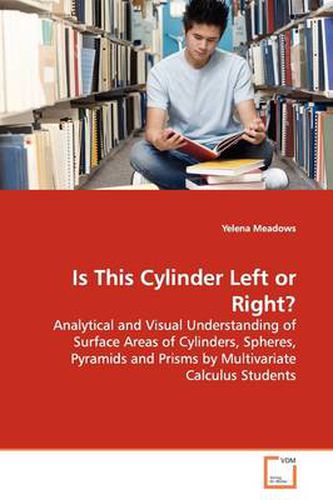Readings Newsletter
Become a Readings Member to make your shopping experience even easier.
Sign in or sign up for free!
You’re not far away from qualifying for FREE standard shipping within Australia
You’ve qualified for FREE standard shipping within Australia
The cart is loading…






This title is printed to order. This book may have been self-published. If so, we cannot guarantee the quality of the content. In the main most books will have gone through the editing process however some may not. We therefore suggest that you be aware of this before ordering this book. If in doubt check either the author or publisher’s details as we are unable to accept any returns unless they are faulty. Please contact us if you have any questions.
Calculus is often viewed as a gateway to more technical college majors, such as engineering, computer science and teaching of mathematics. The high rate of students changing their majors from science-oriented to less mathematically rigorous majors can be observed at any University. Students struggle with passing multivariate content of the calculus college sequence (calculus I, II, and III) in particular, the visual aspect of the course. In the course of semester-long study, observed students divided into three distinct groups according to their mathematical visualization preference and mathematical accuracy characteristics. This book provides an opportunity for mathematics education community to view some of the basic visual mathematical concepts within multivariate context through the students’ eyes. The results were analyzed through the theoretical frame of Krutetskii (1976), Presmeg’s (1985, 1988) mathematical visualization instrument and types of imagery; and Guzman’s (2002) types of visualization. In addition, analysis of students’ errors was made within Donaldson’s (1963) classification of errors.
$9.00 standard shipping within Australia
FREE standard shipping within Australia for orders over $100.00
Express & International shipping calculated at checkout
This title is printed to order. This book may have been self-published. If so, we cannot guarantee the quality of the content. In the main most books will have gone through the editing process however some may not. We therefore suggest that you be aware of this before ordering this book. If in doubt check either the author or publisher’s details as we are unable to accept any returns unless they are faulty. Please contact us if you have any questions.
Calculus is often viewed as a gateway to more technical college majors, such as engineering, computer science and teaching of mathematics. The high rate of students changing their majors from science-oriented to less mathematically rigorous majors can be observed at any University. Students struggle with passing multivariate content of the calculus college sequence (calculus I, II, and III) in particular, the visual aspect of the course. In the course of semester-long study, observed students divided into three distinct groups according to their mathematical visualization preference and mathematical accuracy characteristics. This book provides an opportunity for mathematics education community to view some of the basic visual mathematical concepts within multivariate context through the students’ eyes. The results were analyzed through the theoretical frame of Krutetskii (1976), Presmeg’s (1985, 1988) mathematical visualization instrument and types of imagery; and Guzman’s (2002) types of visualization. In addition, analysis of students’ errors was made within Donaldson’s (1963) classification of errors.